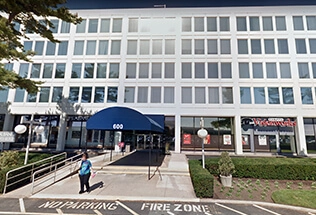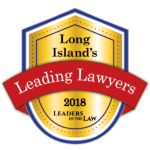Personal injury is a broad legal category encompassing a vast number of situations and incidents. Because of this, many different legal doctrines and subcategories can characterize a case. This depends on how an incident happened and how injuries or damages occurred.
Intentional torts are a subcategory of personal injury cases. They describe incidents in which injuries or damage were incurred intentionally by an at-fault party.
It is important to gain an understanding of basic legal descriptions and learn about how they may impact you or your case. We can help guide you through what intentional torts are and explain the different types of torts and how lawyers apply them.
For any questions or help with your case, you can contact a member of our team at Schwartzapfel Lawyers by visiting us online or calling 1-516-342-2200 today!
Understanding the Law
In the legal world, there are different legal fields that each concern a different category of cases. The two main fields can be described as:
- Criminal Law
- Civil Law
The main difference between criminal and civil law is that criminal law addresses crimes perceived as damaging to society. These may include heinous crimes such as murder or sexual assault. Criminal law also emphasizes the punishment of transgressors for their crimes.
On the other hand, civil law focuses on serving individuals and addressing issues that have personal impacts. This can include a broad variety of cases and encompass anything from immigration claims to personal injury lawsuits. Civil law focuses on providing individuals with compensation or benefits depending on the type of case.
What Is Tort Law?
Tort law is a subcategory of civil law concerned with personal injury cases. It encompasses incidents in which individuals are harmed or suffer losses as a result of the actions of an at-fault party.
Under tort law, an at-fault party is imposed with liability for an incident, and compensation is awarded to individuals injured or harmed. Compensation for harm is not only limited to physical harm or damage to property. It may also include mental or emotional harm after a psychologically detrimental experience.
There are three (3) main steps in resolving a case under tort or personal injury law:
- Proving liability for an incident and determining how it occurred by examining evidence;
- Calculating damages and compensation for injuries, medical expenses, and other losses;
- Reaching a settlement agreement and compensating victims for their losses.
While cases may vary in complexity, these three (3) steps largely characterize tort and personal injury cases.
Occasionally, tort cases may overlap with criminal cases. When this happens, the transgressor is tried for their crimes, as they would be under criminal law, and the victim is also compensated for their losses, in adherence with civil laws.
To learn more about different legal classifications and tort law, you can get in contact with a member of our team at Schwartzapfel Lawyers by calling 1-516-342-2200 today.
Different Types of Torts
Now that you have a better understanding of what tort law is and what types of cases it classifies, we can discuss what intentional torts are and learn about the other types of torts.
While tort law refers to the legal subcategory, as a noun, a tort can be defined as a wrongful act that harms another individual or party.
The different types of torts are categorized by how they occur and the nature of the actions that led to harm or damage. They explore whether or not an at-fault party was intentional, negligent, or neither of the two.
The following are the three (3) main types of torts as well as their characteristics:
Intentional Torts
Intentional torts describe harm or damage that results from a purposeful or intentional act. This is true regardless of whether an at-fault party did not intend or want to cause harm. A person who commits a wrongful action is called the tortfeasor.
Regardless of the motivations behind an action, committing a wrongful or unlawful action that one knows is wrong is grounds enough for a tort to be considered intentional.
Common types of intentional torts include but are not limited to:
- Assault, physical abuse, or the tort of battery
- Threatening someone with physical harm
- The intentional infliction of emotional distress or mental harm
- Trespassing on private land or personal property
- False imprisonment or detaining someone against their own will
- Defamation or reputational harm to others (such as false statements and/or misrepresentation)
Note: In many cases, intentional torts are also considered crimes, therefore overlapping civil cases with criminal law. For example, an assault is both a harmful act against an individual and a threat to a safe and lawful society.
In such a case, the transgressor or individual who commits the physical injury would be tried for their criminal charges and receive punishment or jail time according to the extent of their actions. The victim of an assault would also receive compensation in the form of punitive damages and medical coverage for injuries they incurred during the incident.
For a free consultation regarding your intentional tort claim, contact the skilled personal injury attorneys of Schwartzapfel Lawyers by visiting us online or calling 1-516-342-2200 today. We are ready and willing to fight for your claim in and out of court. All you need to do to get started is contact us ASAP!
Negligence Torts
To begin, it’s worth noting that many personal injury claims are negligence torts. Negligence can be defined as the failure of an individual or party to adhere to lawful or rightful actions they are responsible for upholding.
Negligence is often not intentional but instead occurs due to sloppiness or lack of care when it comes to essential duties that may have an impact on others.
There are countless negligence torts and related personal injury cases, such as medical malpractice. Examples here could include but are not limited to:
- A medical professional harms a patient by accidentally administering the wrong treatment or is careless about running necessary tests and fails to diagnose a terminal illness;
- A driver on the road fails to adhere to traffic laws and causes a crash because they were driving over the speed limit;
- A construction worker is electrocuted because their supervisor did not run necessary maintenance checks on electrical wires;
- A property manager fails to put up a sign indicating that floors are wet and someone slips and hurts their back.
In negligence tort cases, liability for an incident must be determined before an at-fault party can be sued. Those injured due to negligence torts often receive compensation for their injuries and losses due to the incident.
Strict Liability Torts
Intentional torts are characterized by intentional action, while negligent actions characterize negligence torts. When it comes to strict liability torts, an at-fault party’s actions do not have to be either intentional or negligent.
In fact, under strict liability, no proof of liability is required to hold an individual or party responsible for damages or harm incurred as a result of their actions. Liability is charged regardless of intention or regardless of how careful an individual or party was in its actions.
Possible examples of strict liability torts include:
- Dog or animal bites in which the owner is held responsible for their pet
- Ultrahazardous activities, such as the handling of hazardous chemicals, that pose great risks regardless of how much care is exercised
- Product liability cases in which a manufacturer is held responsible for harm caused by its products
The least common type of tort, strict liability allows victims of harm to receive monetary compensation for injuries and/or damages incurred to them through high-risk incidents in which liability can be assumed.
For more general information about torts or for specific help with your personal injury case, reach out to the seasoned personal injury lawyers at Schwartzapfel Lawyers by calling 1-516-342-2200 now!
Intentional Torts: Recap
Torts are wrongful acts that result in harm to others. The main difference between the various types of torts is the nature of the actions behind an injury or damage.
Intentional torts are intentional wrongful actions committed by an at-fault party, regardless of whether or not the at-fault party wanted to cause harm or detriment to someone else. Intentional torts can also be considered crimes, as they involve intentional and knowledgeable disobedience of the law.
Intentional tort cases are unlike other personal injury cases in that transgressors are often tried for their crimes and unlawful actions.
At Schwartzapfel Lawyers, we specialize in all different types of torts and personal injury cases. To file a lawsuit or talk to a seasoned lawyer, call us at 1-516-342-2200.
But you shouldn’t wait, as your window to file a claim and recover the money and benefits you are entitled to may soon close forever. To keep that from happening, please call Schwartzapfel Lawyers today. One free consultation can save you miles of headache, heartache, and financial strain down the road!
Call now!
DISCLAIMER: Nothing on this page should be considered legal advice. You should seek the appropriate counsel your situation requires. For more information, call 1-516-342-2200 now!
Sources:
Schwartzapfel Lawyers, P.C. | Fighting For You™™
Tort – StatPearls | National Library of Medicine
What Is An Intentional Tort? Definition & Examples | Forbes Advisor
Intentional Tort – Legal Information Institute | Cornell Law School
















